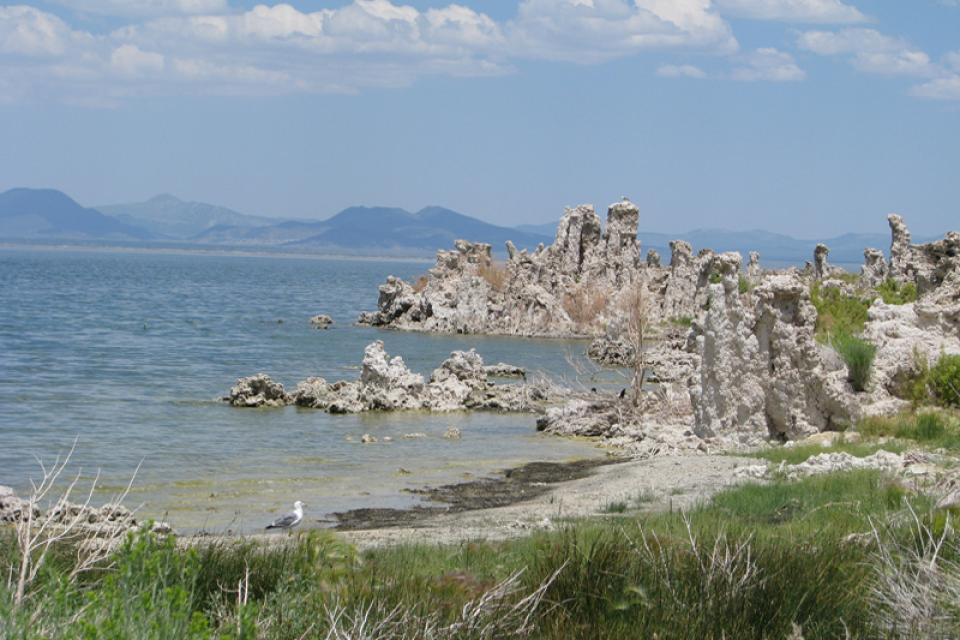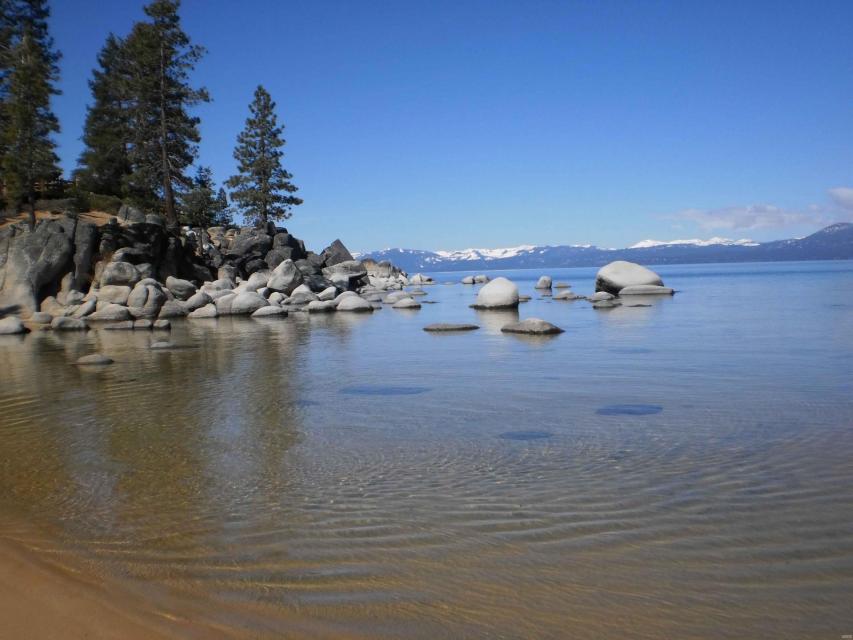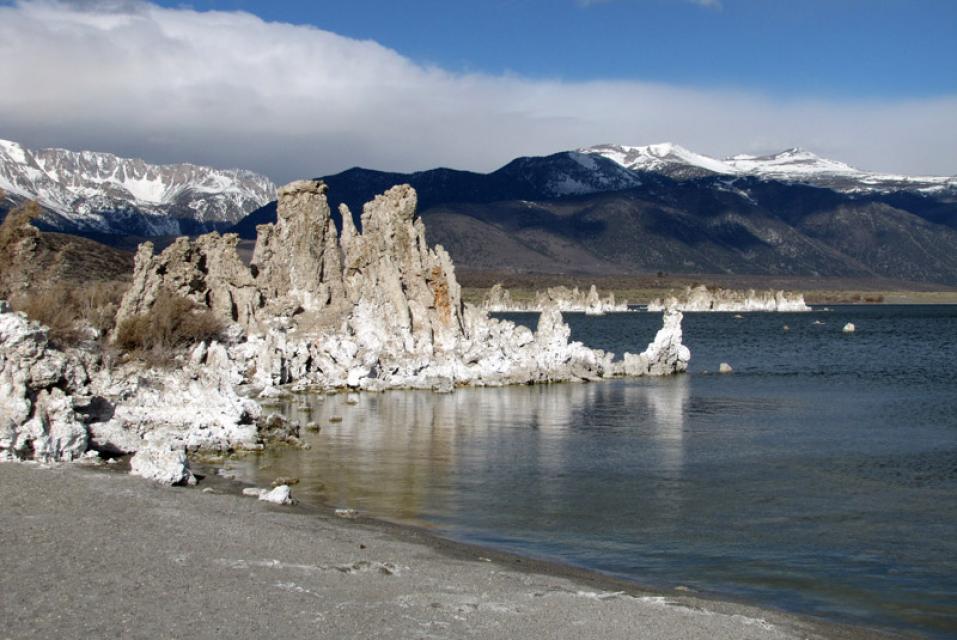Mono Lake
Mono Lake is an inland sea located east of Yosemite National Park near the Nevada border. It became the focus of a major environmental battle from the 1970s to the 1990s.
The lake has a surface area of about 70 square miles and is the second largest lake in California and one of the oldest in North America. Its salty waters occupy former volcanic craters. The old volcanoes contribute to the geology of the lake basin, which includes sulfates, salt and carbonates.
The carbonates also make the lake highly alkaline. These minerals and salts have accumulated in the lake for thousands of years since Mono Lake has no natural outlet other than evaporation.
“An unpretending expanse of grayish water…with two islands in the center, mere upheavals of rent and scorched and blistered lava, snowed over with gray banks and drifts of pumice stone and ashes…” Mark Twain, Roughing It
Mountain streams and other tributaries feed the lake, which attracts California gulls feeding upon brine shrimp and flies. Islands in Mono Lake also draw migratory waterfowl.
Los Angeles began diverting water from Mono Lake tributaries in the 1940s, extending the Los Angeles Aqueduct from the Owens Valley. Forty years later, the water level of the lake had dropped more than 40 feet. The decline in the lake level and simultaneous increase in salinity jeopardized the basin’s unique shrimp and bird populations. The lowered lake also uncovered stretches of the highly alkaline lake bed. When the lake bed is exposed to the wind, dust storms are created that are harmful to human respiratory health.
Public Trust and Mono Lake
The National Audubon Society joined with the Mono Lake Committee in a lawsuit against the Los Angeles Department of Water and Power in 1979. In a 1983 landmark decision, the California Supreme Court held that the public trust doctrine applied to Los Angeles’ rights to divert water from Mono Lake’s feeder streams.
Later, an injunction was issued in 1991 by a superior court halting LADWP’s water exports. The State Water Resources Control Board then adopted additional restoration plans for Mono Lake, including limiting LADWP diversions until Mono Lake rises 20 feet (which is forecast to occur by 2021).











